 Movies and TV
Movies and TV  Movies and TV
Movies and TV  History
History Top 10 Historical Assassins Who Failed Spectacularly
 Music
Music 10 Bands That Completely Transformed Their Sound Throughout Their Career
 Creepy
Creepy 10 States With The Most Cryptids In The US
 Animals
Animals 10 Orca Quirks That Will Make You Forget the Boat Attacks
 Music
Music Top 10 Albums That Were Hated On Release But Became Classics
 Mysteries
Mysteries 10 Complex Psychological Mysteries of the Mind
 Movies and TV
Movies and TV 10 Eerie Tales From Behind The Scenes Of Rosemary’s Baby
 Health
Health 10 Horrifying Things That Can Happen to Your Eyeballs
 Weird Stuff
Weird Stuff 10 Hilarious-Sounding Recent News Stories
 Movies and TV
Movies and TV The Top 10 Ground Vehicles from the ‘Star Wars’ Galaxy
 History
History Top 10 Historical Assassins Who Failed Spectacularly
 Music
Music 10 Bands That Completely Transformed Their Sound Throughout Their Career
Who's Behind Listverse?

Jamie Frater
Head Editor
Jamie founded Listverse due to an insatiable desire to share fascinating, obscure, and bizarre facts. He has been a guest speaker on numerous national radio and television stations and is a five time published author.
More About Us Creepy
Creepy 10 States With The Most Cryptids In The US
 Animals
Animals 10 Orca Quirks That Will Make You Forget the Boat Attacks
 Music
Music Top 10 Albums That Were Hated On Release But Became Classics
 Mysteries
Mysteries 10 Complex Psychological Mysteries of the Mind
 Movies and TV
Movies and TV 10 Eerie Tales From Behind The Scenes Of Rosemary’s Baby
 Health
Health 10 Horrifying Things That Can Happen to Your Eyeballs
 Weird Stuff
Weird Stuff 10 Hilarious-Sounding Recent News Stories
10 Forgotten Ancient Civilizations
The typical history textbook has a lot of ground to cover and only so many pages to devote to anything before Jesus. For most of us, that means ancient history is a three-dog show—Egypt, Rome, and Greece. Which is why it’s easy to get the impression that, outside of those three, our map of the ancient world is mostly just blank space. But actually nothing could be further from the truth. Plenty of vibrant and fascinating cultures existed outside that narrow focus. Let’s fill in the blanks.
10Aksum
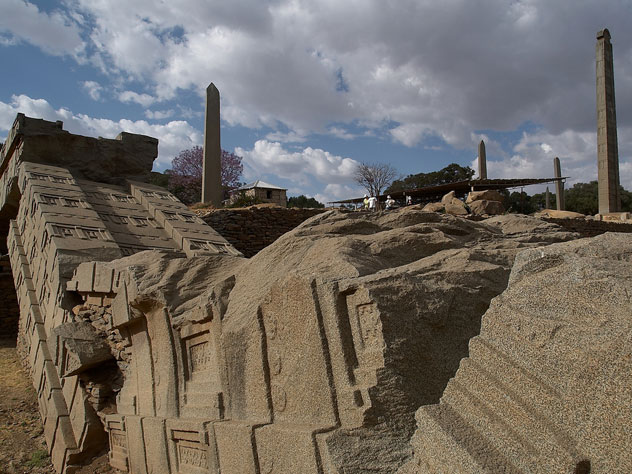
The kingdom Aksum (or Axum) has been the subject of countless legends. Whether as the home of the mythical Prester John, the lost kingdom of the Queen of Sheba, or the final resting place of the Ark of the Covenant, Aksum has long been at the forefront of Western imaginations.
The Ethiopian kingdom of reality, not myth, was an international trading power. Thanks to access to both the Nile and Red Sea trading routes, Aksumite commerce thrived, and by the beginning of the common era, most Ethiopian peoples were under Aksumite rule. Aksum’s power and prosperity allowed it to expand into Arabia. In the third century A.D., a Persian philosopher wrote that Aksum was one of the world’s four greatest kingdoms, alongside Rome, China, and Persia.
Aksum adopted Christianity not long after the Roman Empire did and continued to thrive through the early Middle Ages. If not for the rise and expansion of Islam, Aksum might have continued to dominate East Africa. After the Arab conquest of the Red Sea coastline, Aksum lost its primary trade advantage over its neighbors. Of course, Aksum had only itself to blame. Just a few decades earlier, an Aksumite king had given asylum to early followers of Muhammad, thus ensuring the expansion of the religion which was to unmake the Aksumite empire.
9Kush
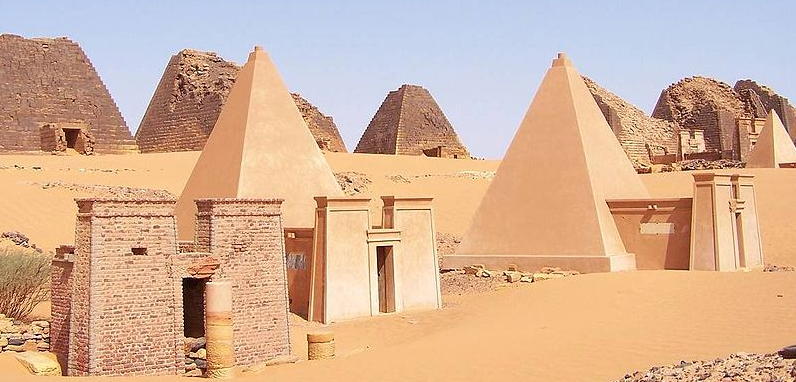
Known in ancient Egyptian sources for its abundance of gold and other valuable natural resources, Kush was conquered and exploited by its northern neighbor for nearly half a millennium (circa 1500–1000 B.C.). But Kush’s origins extend far deeper into the past—ceramic artifacts dated to 8000 B.C. have been discovered in the region of its capital city, Kerma, and as early as 2400 B.C., Kush boasted a highly stratified and complex urban society supported by large-scale agriculture.
In the ninth century B.C., instability in Egypt allowed the Kushites to regain their independence. And, in one of history’s greatest reversals of fortune, Kush conquered Egypt in 750 B.C. For the next century, a series of Kushite pharaohs ruled a territory that far outstripped their Egyptian predecessors. It was the Kushite rulers who revived the building of pyramids and promoted their construction across the Sudan. They were eventually ousted from Egypt by an Assyrian invasion, ending centuries of Egyptian and Kushite cultural exchange.
The Kushites fled south and reestablished themselves at Meroe on the southeast bank of the Nile. At Meroe, the Kushites broke away from Egyptian influence and developed their own form of writing, now called Meroitic. The script remains a mystery and still has not been deciphered, obscuring much of Kush’s history. The last king of Kush died in A.D. 300, though his kingdom’s decline and the exact reasons for its demise remain a mystery.
8Yam
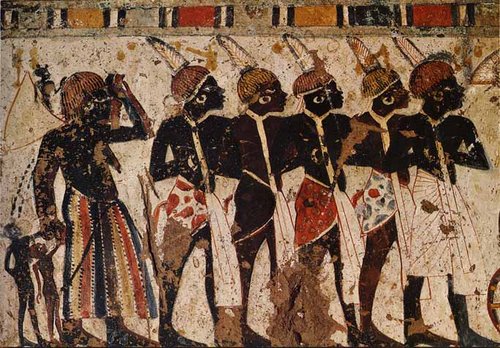
The Kingdom of Yam certainly existed as a trading partner and possible rival of Old Kingdom Egypt, yet its precise location has proven nearly as elusive as that of the mythical Atlantis. Based on the funerary inscriptions of the Egyptian explorer Harkhuf, it seems Yam was a land of “incense, ebony, leopard skins, elephant tusks, and boomerangs.”
Despite Harkhuf’s claims of journeys overland exceeding seven months, Egyptologists have long placed the land of boomerangs just a few hundred miles from the Nile. The conventional wisdom was that there was no way ancient Egyptians could have crossed the inhospitable expanse of Saharan Desert. There was also some question of just what they would have found on the other side of the Sahara. But it seems we underestimated ancient Egyptian traders, because hieroglyphs recently discovered over 700 kilometers (430 miles) southwest of the Nile confirm the existence of trade between Yam and Egypt and point to Yam’s location in the northern highlands of Chad.
Exactly how the Egyptians crossed hundreds of miles of desert prior to the introduction of the wheel and with only donkeys for pack animals remains perplexing. But, at the very least, their destination is no longer shrouded in doubt.
7The Xiongnu Empire
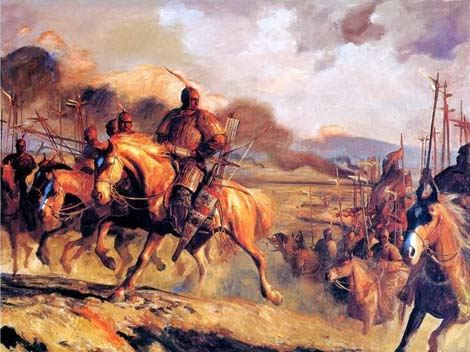
The Xiongnu Empire was a confederacy of nomadic peoples which dominated the north of China from the third century B.C. until the first century B.C. Imagine Genghis Khan’s Mongol army, but a millennium earlier . . . and with chariots. A number of theories exist to explain the Xiongnu’s origins, and at one time some scholars argued that the Xiongnu may have been the ancestors of the Huns. Unfortunately, the Xiongnu left few records of their own behind.
What we do know is that Xiongnu raids on China were so devastating that the Qin emperor ordered the earliest construction work on the Great Wall. Nearly half a century later, the Xiongnu’s persistent raiding and demands for tribute forced the Chinese, this time under the Han dynasty, to refortify and expand the Great Wall even further. In 166 B.C., over 100,000 Xiongnu horsemen made it to within 160 kilometers (100 mi) of the Chinese capital before finally being repulsed. It took a combination of internal discord, succession disputes, and conflict with other nomadic groups to weaken the Xiongnu enough for the Chinese to finally assert some semblance of control over their northern neighbors. Still, the Xiongnu were the first, and the longest lasting, of the nomadic Asian steppe empires.
6Greco-Bactria
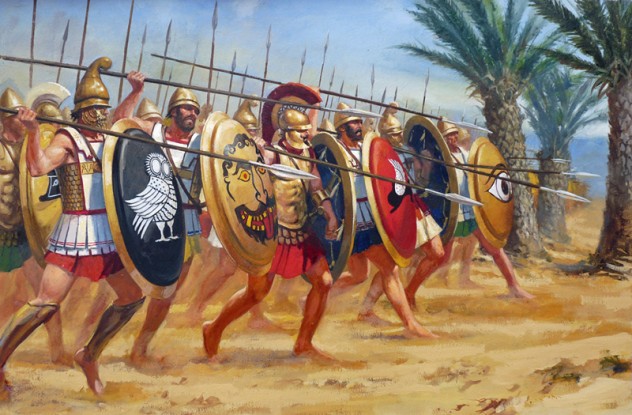
Too often, in recounting the life and conquests of Alexander the Great, we fail to remember the men who followed him into battle. Alexander’s fate is well documented, but what of the men who bled for the young general’s conquests?
When Alexander died unexpectedly, the Macedonians didn’t just head home. Instead, their generals fought one another for supremacy before carving up the empire among those left standing. Seleucus I Nicator made out pretty well, taking for himself pretty much everything from the Mediterrraean in the west to what is now Pakistan in the east. However even the Seleucid empire is fairly well known compared to the splinter state of Greco-Bactria.
In the third century B.C., the province of Bactria (in what is now Afghanistan and Tajikistan) became so powerful that it declared independence. Sources describe a wealthy land “of a thousand cities,” and the large amount of surviving coinage attests to an unbroken succession of Greek kings spanning centuries. Greco-Bactria’s location made it a center of fusion for a litany of cultures: Persians, Indians, Scythians and a number of nomadic groups all contributed to the development of a wholly unique kingdom. Of course, Greco-Bactria’s location and wealth also attracted unwanted attention and, by the early second century B.C., pressure from nomads to their north had forced the Greeks south into India.
At Alexandria on the Oxus, or Ai Khanoum as it is known now, fascinating evidence for this radical combination of Greek and Eastern culture was unearthed, before fighting during the Soviet-Afghan War destroyed the site in 1978. During the period of excavation, Indian coins, Iranian altars, and Buddhist statuary were found among the ruins of this decidedly Greek city, which was complete with Corinthian columns, a gymnasium, an amphitheater, and a temple combining Greek and Zoroastrian elements.
5Yuezhi
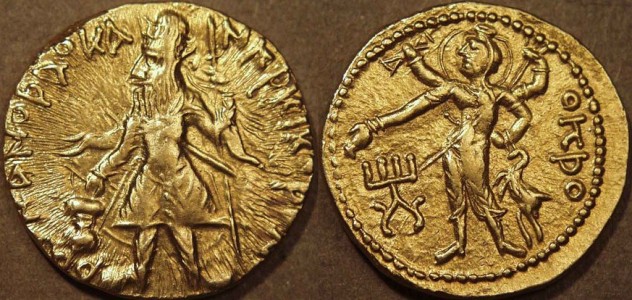
The Yuezhi are notable for having seemingly fought everybody. Just imagine the Yuezhi as the Forrest Gump of ancient history, because for several centuries they appeared in the background of an improbable number of significant events across Eurasia.
The Yuezhi originated as a confederation of several nomadic tribes on the steppes north of China. Yuezhi traders ranged over great distances to exchange jade, silk, and horses. Their flourishing trade brought them into direct conflict with the Xiongnu, who eventually forced them out of the Chinese trading game.
The Yuezhi then headed west, where they encountered and defeated the Greco-Bactrians—forcing them to regroup in India. The Yuezhi’s migration to Bactria also displaced a people called the Saka, who responded by overrunning portions of the Parthian Empire. Tribes of Scythians and Saka eventually established themselves all over Afghanistan. By the first and second centuries A.D., the Yuezhi were fighting those same Scythians in addition to the occasional war in Pakistan and Han China. During this period, the Yuezhi tribes consolidated and established a sedentary, agricultural economy. This “Kushan” empire survived for three centuries, until forces from Persia, Pakistan, and India all reconquered their old territories.
4The Mitanni Kingdom
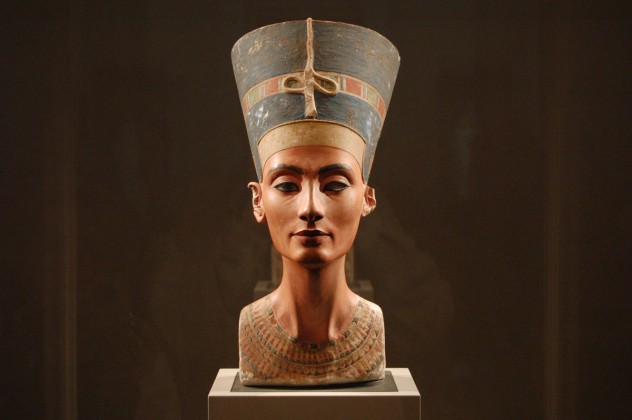
The Mitanni state existed from about 1500 B.C. until the 1200s B.C. and consisted of what is now Syria and northern Iraq. Chances are you’ve heard of at least one Mitannian, as there is evidence to suggest that Egypt’s famous queen Nefertiti was born a princess in the Mesopotamian state. Nefertiti was likely married to the Pharaoh as part of an effort to improve relations between the two kingdoms.
The Mitannians are believed to have been Indo-Aryan in origin and their culture demonstrates the extent to which ancient Indian influence penetrated early Middle Eastern civilization. Mitannians espoused Hindu beliefs like karma, reincarnation, and cremation, beliefs that make the link between Mittani and Egypt all the more intriguing. Nefertiti and her husband, Amenhotep IV, were at the center of a short-lived religious revolution in Egypt, although we can only guess how much of that might be related to her foreign background. But Nefertiti is known to have been highly influential and was often depicted in situations, like smiting an enemy, that were typically reserved for the Pharaoh.
While much of the above remains speculative, scholars are hopeful that upcoming excavations will uncover the Mitannian capital of Washukanni and reveal more about the ancient kingdom.
3Tuwana

Kingdoms don’t come much more lost or forgotten than Tuwana. When the Hittite Empire (the alpha dog of Bronze Age Anatolia) fell, Tuwana was one of a handful of city-states which helped fill the power vacuum in what is now Turkey.
During the ninth and eighth centuries B.C., Tuwana rose to prominence under a series of kings, of which only a few are known from inscriptions. Tuwana leveraged its position between the Phrygian and Assyrian empires to facilitate trade throughout Anatolia. As a result it amassed significant wealth.
In addition to its strong trading economy, Tuwana seems to have possessed great cultural riches. The kingdom used a hieroglyphic language called Luwian, but later adopted the alphabetical Phoenician script. It turns out this could have been pretty important, since Tuwana’s position as a link between east and west put the forgotten kingdom into contact with elements of ancient Greek culture. It’s possible that one result of all the linguistic interaction in Tuwana may been the origin of the Greek alphabet. Not too bad for a kingdom you’ve never heard of.
It seems Tuwana’s central location and the disunity of the Anatolian city-states made the kingdom ripe for the taking in the early 700s B.C. As the Assyrian Empire expanded westward, it rolled up each of the post-Hittite city-states along its way until to controlling most of the Middle East.
If that all sounds rather speculative, it’s because up until 2012, all that was known about Tuwana was based on a handful of inscriptions and a few mentions in some Assyrian documents. The recent discovery of a massive city believed to be the base of Tuwana’s power is changing all that.
With such a large and well-preserved find, archaeologists have begun piecing together the story of a powerful and wealthy kingdom, which controlled trade through the Cilician Gates for several centuries. And considering that the Cilician pass was like a highly compressed Silk Road, Tuwana’s archaeological potential is tremendous.
2Mauryan Empire

Chandragupta Maurya was essentially India’s Alexander the Great. So it’s only fitting that the two men supposedly met. Chandragupta sought Macedonian aid in his bid for control of the subcontinent, but Alexander’s troops were too busy with a mutiny.
Undaunted, Chandragupta united the bulk of India under his rule and defeated all comers on the subcontinent. He did all this by age 20. After Alexander’s death, it was the Mauryan Empire which prevented his successors from expanding any farther into India. Chandragupta personally defeated several Macedonian generals in battle, after which the Macedonians preferred accord rather than risk another open war.
Unlike Alexander, Chandragupta left behind a carefully planned bureaucracy and government to ensure the duration of his legacy. And it might have survived longer if not for a coup in 185 B.C. that left India divided, weak, and open to invasion from the Greeks just to its north.
1Indo-Greeks
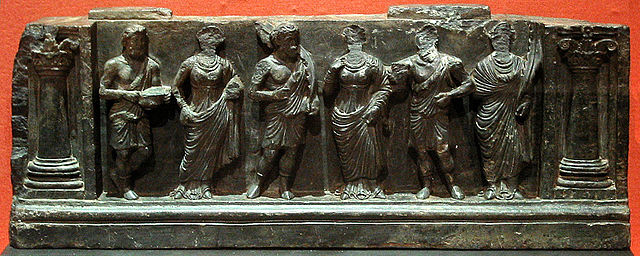
There’s a reason you can’t talk about the ancient world without bringing up the Greeks—those Hellenes were everywhere. As mentioned before, external pressures doomed the Greco-Bactrians, but the Indo-Greek kingdom carried the torch for Hellenistic culture for another two centuries in northwest India.
The most famous of the Indo-Greek kings, Menander, supposedly converted to Buddhism after a lengthy debate with the philosopher Nagasena, who recorded the conversation in “The Questions of King Menander.” Greek influence can be seen clearly in the fusion of artistic styles. While surviving statuary is scarce, some finds show Buddhist monks and devotees sculpted in a definitively Greek style, complete with Greek tunics.
Based on some Indo-Greek coinage made using a metallurgic process unique to China, it is believed there existed extensive trade between the two states. The accounts of the Chinese explorer, Zhang Qian, attest to this trade as early as the end of the second century B.C. The Indo-Greek kingdom’s downfall seems to have been the combination of Yuezhi encroachment from the north and native Indian expansion from the south.
You can also find J. hanging out here.








